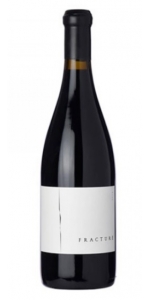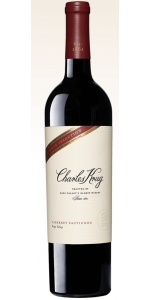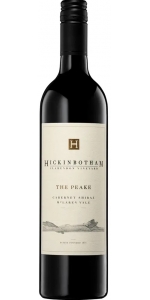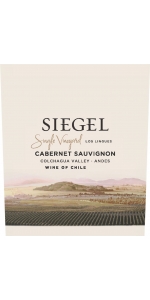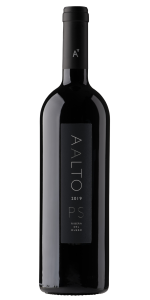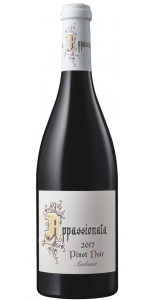Often described as a Booker flagship, Fracture is one of the world’s great Syrah's. Only the softest Syrah in barrel makes the cut for this dense and powerful wine. The namesake pays homage to the calcareous soil in our vineyard, the limestone causes it to ‘fracture’. Deep and mysterious at first sight, the 2018 vintage is rich and velvety on your palate. There is an interesting balance of earth and fruit, with traces of sweet beets, dark plums and chocolate. Though this silky wine will pair with anything, our thoughts are going to salty popcorn by the fire or Dutch Gouda cheese with some black truffle mustard.
Bodegas Alto Moncayo Aquilon Garnacha 2017
3 bottles with free shipping for: $540.00
6 bottles with free shipping for: $1,050.00
12 bottles with free shipping for: $2,040.00
| BUY MORE! SAVE MORE! | ||||||||||||||||||||
|
| Country: | Spain |
| Region: | Campo de Borja |
| Winery: | Alto Moncayo |
| Grape Type: | Garnacha |
| Organic: | Yes |
| Vintage: | 2017 |
| Bottle Size: | 750 ml |
Bodegas Alto Moncayo Aquilon Garnacha is made from 100% Garnacha.
The wines of Alto Moncayo are crafted to express the unique terroir of windswept high elevation Campo de Borja DO; and to serve as a benchmark for world class Old Vine Garnacha.
Aquilón is "The jewel in the Crown" a selection of the best barrels from the best lots. The vines are 60-100 years old.
Review:
This garnet-colored wine offers aromas of black currant, black raspberry and black licorice, with just a touch of charcuterie. The fruit flavors shine through with subtle notes of crushed violet. It has soft tannic structure, with a pleasant bit of grippiness in the post palate as it leads up to the long, long, finish.
-Wine Enthusiast 95 Points
About the Vineyard
Vineyards in Tabuenca and Borja, planted with indegenous clones of Garnacha starting in the 1920s.
Wine Production
The selected highest quality grapes are placed into small stainless-steel tanks of 7 tons capacity. The must is basket pressed and fermentation is finished in new French and American oak where it complets the malolactic fermentation. Wine is aged in the barrels for 24 months before bottling.
Tasting Notes
Appearance: Very deep red, scarlet rim
Aroma: Minerals and vanilla. Hints of raisins and dark Chocolate
Palate: As typical of the vintage, power and intensity with disarming elegance.
Food Pairing:
Goes well with beef, pork, game based stews and rice dishes.
Bodegas Alto Moncayo is a winery located in the Campo de Borja D.O. It was founded in 2002 with the aim of turning it into a world reference for Garnacha wines of the highest quality, crafted from some of the oldest native vine clones in the area.The garnacha grape is one of the varieties that best expresses its terroir. Thus, the Garnacha of Alto Moncayo is different from the rest of the Campo de Borja D.O area. This is due to the very strict selection made from the vineyards, the type of soil in which it is grown, the microclimate, and the age of the vines.
Located in Borja- the heart of the Campo de Borja DO . Vines are planted at the foothills of El Moncayo which is the highest point in the Iberian Mountain Range (2,315 m) and the winery's namesake. The region experiences a continental climate with hot summers and cold winters. Vineyards are planted on very unique soils of red clay (indicative of being rich in iron) mixed with red slate, and because of the hillside location are shallow and nutrient-deficient.
The Garnacha grapes of Alto Moncayo undergo very strict vineyard selection, from vines planted as far back as the early 1900's through the 1970's. Only the most perfectly mature clusters are selected and carried in small crates to prevent crushing, where they are further sorted and selected at triage tables. Wines undergo malolactic fermentation in both French & American oak, and aged in new barrels between anywhere from 16-24 months. These practices, in combination with the unique microclimate of the area ensure superior quality Garnacha that is distinct from any other in the Campo de Borja D.O.
Booker Fracture is made from 100 percent Syrah.
Review:
The 100% Syrah 2019 Fracture comes all from the Booker Estate Vineyard and is another pure, balanced, incredibly classy wine from this estate. Loads of darker fruits, ground black pepper, crushed stone, and scorched earth give way to a medium to full-bodied, powerful, concentrated Syrah that will benefit from 2-4 years of bottle age and cruise for 10-15 years.
-Jeb Dunnuck 97 Points
Dark purple. An exotically perfumed, expressive bouquet evokes ripe black and blue fruits, Moroccan spices, olive paste, licorice, potpourri and incense. Densely packed and impressively energetic in the mouth, offering intense blackberry, cassis, kirsch, fruitcake and floral pastille flavors that firm up slowly through the back half. The floral and spice notes repeat emphatically on an impressively long, youthfully tannic finish that leaves smoky mineral and licorice notes behind.
-Vinous 97 Points
Charles Krug Peter Mondavi Family Vintage Selection Cabernet Sauvignon is made from 100 percent Cabernet Sauvignon.
Review:
The 2016 Cabernet Sauvignon Vintage Selection has a deep garnet-purple color and features exuberant notes of crushed black cherries, mulberries and blackcurrant cordial with touches of unsmoked cigars, menthol, yeast extract and pencil shavings. Full-bodied, concentrated and opulent in the mouth, it has a solid line of plush tannins and plenty of backbone freshness to lift the generous fruit to a long fruity finish.
-Wine Advocate 95 Points
Crown Point Estate Selection is made from 75% Cabernet Sauvignon, 10% Merlot, 6% Petit Verdot, 6% Cabernet Franc, 3% Malbec.
The 2016 Crown Point Estate Selection exhibits a heady aromatic array of baking spices, ripe red and black fruits, with deep intonations of earth and minerals. The palate is elegant and bright, with appealing acids and nuanced notes of savory mocha and dried herbs. Polished and seamless, the tannins finish with a comet-like trail of textural opulence highlighted by glossy flavors of baked berry pie and warm toast. Recommended drinking window: now through 2030s.The 2016 Estate Selection is representative of all five red Bordeaux varieties. The selection process starts in the vineyard and continues on through the winemaking process: only the best lots make the final blend. All blocks were harvested & fermented separately. The individual components were blended after 12 months in barrel. Total time in 225 liter French oak barrels was 26 months.
Review:
Deeply colored, the 2016 Estate Selection checks in as 75% Cabernet Sauvignon, 10% Merlot, 6% Petit Verdot, 6% Cabernet Franc, 3% Malbec that was brought up 26 months in 75% new French oak. Deeply colored, it has a smoking good bouquet of crème de cassis, smoke tobacco, lead pencil, camphor, and hints of chocolate. This gives way to a powerful, opulent Cabernet Sauvignon that has plenty of sweet tannins, a layered, multi-dimensional texture, no hard edges, and an awesome finish. I’d happily put this beauty in a lineup of top Napa Valley Cabernet Sauvignon and blends.
-Wine Enthusiast 97 Points
There’s an impressive amount of complexity on the nose of this bottling by winemaker Adam Henkel, from crushed graphite and concentrated black strawberry to cinnamon pastry, licorice and a brush of herbs. The sip is intense, with leathery but chiseled tannins presenting flavors of charred black currant, licorice, black olive, dried flower and white pepper
-Jeb Dunnuck 97 Points
Crown Point Estate Selection is made from 70% Cabernet Sauvignon, 10% Merlot, 10% Malbec, 5% Cabernet Franc, 5% Petit Verdot.
The 2017 Crown Point Estate Selection is an engaging wine with notes of red fruit, strawberries, and vibrant floral tones of violets in harmony with toasted coffee notes. On the palate, the wine displays a gentle sweetness married with fine grain tannins, a velvety texture providing a long finish.
Review:
There's a purity to the nose of this bottling that reveals deep, lush waves of boysenberry paste alongside a savory tone of charred beef. Polished tannins frame the sip, where ample amounts of rich black plum and blackberry are enhanced by caramel, coffee bean and mocha flavors, with acidity holding tight into the finish.
Wine Enthusiast 96 Point
Domaine Nico le Paradis Pinot Noir is made from 100 percent Pinot Noir.
The cool climate vineyard that belongs to Laura and her sister Adrianna Catena feels like paradise itself to Laura. It is lined by trees and fruit orchards, with majestic views of the Andes. Inside the 12 Hectare vineyard, there is a little house with two tiny bedrooms and a kitchen, where Laura dreams of spending a whole month reading books-Laura's version of paradise. The little house is affectionately named Chateau Laura. About the Vineyard The tiny parcel where Le Paradis is grown was planted in 2011 with Dijon 667 Clones over two acres. Wine Production The grapes from this small parcel were elaborated in 15 separate microvinifications.
All the microvinifications were fermented with indigenous yeast. 20% of the microvinifications were fermented with 100% whole clusters in oak roll-fermentor of 600L and low temp (22 Celcius degrees). 40% were fermented with 20% whole cluster in small vats of 800L and 40% fermented in small vats of 800L without sulfites until 4%V/V of alcohol.
Review:
From soils rich in calcium carbonate and sand, in a vineyard 1,600 meters above sea level, this wine comes from a selection of 2.7 hectares that produced very little fruit in 2016, just barely enough to fill 800 bottles. But watch out for this white, with its edge, its minerality, those saline notes that are so characteristic of chardonnay from the chalky Gualtallary soils. The wine was aged for a year in used barrels, and it has some of the toast, but here it’s the deep minerality that dominates.
Patricio Tapia - Descorchados 96 Points
Hickinbotham Peake Cabernet Shiraz is made from 60 percent Cabernet and 40 percent Shiraz.
Named after the late Mr. Edward John Peake who established the first vineyard and orchard at Clarendon circa 1850. Blending Cabernet Sauvignon and Shiraz is a famous part of Australian winemaking history and whilst the individual components of this wine are mighty, the sum of The Peake’s parts is magnificent. The Cabernet shines aromatically with notes of blackberry pie and dark chocolate, while the Shiraz fills the mid-palate with black plum and toasty oak. Fine tannins and balanced acidity contribute to an incredibly long finish. The Peake continues to honor the legacy of this iconic Australian blend.
Review:
Hickinbotham's 2017 The Peake Cabernet Shiraz is a 60-40 blend of the varieties, aged in a healthy proportion of new French oak. As a barrel selection, it stands above the other wines in the lineup, being more complex and complete than either the Brooks Road Shiraz or the Trueman Cabernet. Cassis leads the way, rounded out by ripe cherries and joined by shadings of cedar and vanilla. It's full-bodied and concentrated in the mouth, rich, supple and almost creamy in texture and boasts a long, silky finish. While nearly drinkable already, it should easily age for a decade or more.
-Wine Advocate 96 Points
Intense ruby color of high layer with garnet edge, clean and shiny. Intense nose that, from the beginning, transmits complexity, penetrating, with aromas of black fruits, blueberries and currants, undergrowth, roasted memories, toffee, coffee powder, liquorice, cloves, vanilla and lebanese cedar. Mouth with freshness and balance, with tannins ripe and creamy, which highlight its elegance, with a step harmonious and intense. Long and pleasant aftertaste, with a great variety of balsamic and spicy memories.
Review:
The old-vine component of the El Otero parcel, running to around seven hectares, supplies the fruit for this ageworthy Tinto Fino. After a frost-induced break in 2017, it's back with interest in 2018. Aged in new French oak, but not dominated by the wood, it's a finely judged red from Julio Sáenz with notes of blackberry and tangerine, filigree tannins and a long, textured finish. 2023-33
-Tim Atkin 96 Points
-
Siegel Single Vineyard Los Lingues Cabernet Sauvignon is made from 100% Cabernet Sauvignon.
Viña Siegel Single Vineyard Cabernet Sauvignon is the result of our family's continuous search for quality wines with personality which faithfully reflect the best of our terroir. This wine comes from selected grapes from our "Los Lingues" vineyard in Alto Colchagua.
Located in the foothills of the Andes where the influence of the Andean winds result in an elegant Cabernet Sauvignon with great concentration of ripe red fruits, cassis and chocolate, and a balanced, richly structured, and long finish.
An intense violet color. Smells of cassis and is complemented with notes of mature red fruit and chocolate. A round and elegant wine with an excellent final persistence.
After carefully determining the moment for the harvest, the grapes are harvested by hand and later de-stemmed and marinated in cold temperatures for 5-6 days. Alcoholic fermentation is between 26ºC and 29ºC during which daily reassembly is implemented according to taste.Post-fermentation infusion lasts for two or three weeks. Once the blend is made, the wine is gently clarified and stabilized in cool temperatures if necessary.
Review:
"The 2017 vintage of the Los Lingues Cabernet Sauvignon is in every respect the equal of the 2016, which we rated highly. It begins with smoky, dark fruited nose and proceeds to a round, silky, well balanced palate of mineral-inflected, herbal-tinged dark cassis. There’s a sense of refinement and balance to this wine."
- I-winereview.com (March 2022), 92+ pts
Aalto P.S. Pagos Seleccionados Tinto is made from 100 percent Tempranillo.
Climatic conditions
The farming year began with a mild autumn and little precipitation. A very dry winter started with -9ºC reaching at the end higher temperatures than normal for that time of the year. Spring and summer characterized by little rain, only some rain showers in July and late August avoided the hydric stress of the vines. The vegetative cycle of the vine developed with big variations of temperatures, alternating warm and atypical low temperatures of 4ºC for mid-June. The ripening of the grapes happened under very good conditions and the harvest started on 24th September 2019.
Grape origin
100% Tinto Fino (Tempranillo) primarily from very old vines – 60 to 90 years old – from selected plots in La Horra and La Aguilera. The harvest was done by hand, in small boxes of 15 kilos that are thoroughly inspected, bunch by bunch, on the selection table.
Tasting notes
Average oak ageing
Aged for 21 months in new French oak barrels.
Review:
Color: dark cherry, Aroma: toasty, spicy, fine cocoa, black fruit, Mouth: tasty, toasty, fine bitterness, ripe tannins
Guia Penin 94 Points
Aalto P.S. Pagos Seleccionados Tinto is made from 100 percent Tempranillo.
Climatic conditions
The farming year began with a mild autumn and little precipitation. A very dry winter started with -9ºC reaching at the end higher temperatures than normal for that time of the year. Spring and summer characterized by little rain, only some rain showers in July and late August avoided the hydric stress of the vines. The vegetative cycle of the vine developed with big variations of temperatures, alternating warm and atypical low temperatures of 4ºC for mid-June. The ripening of the grapes happened under very good conditions and the harvest started on 24th September 2019.
Grape origin
100% Tinto Fino (Tempranillo) primarily from very old vines – 60 to 90 years old – from selected plots in La Horra and La Aguilera. The harvest was done by hand, in small boxes of 15 kilos that are thoroughly inspected, bunch by bunch, on the selection table.
Tasting notes
Average oak ageing
Aged for 21 months in new French oak barrels.
Review:
Lots of depth here, with ripe blackberries and some nicely baked black cherries, roasted herbs, incense, dark spices, mussels and a balsamic tinge. An admirably fine dollop of tannins on the palate, which are immaculate and juicy, as they thoroughly dunk into the black fruit, melting into a persistent finish that lasts for over a minute. Very impressive. Drink or hold.
-James Suckling 96 Points
Deep cherry red in color with a garnet rim. On the nose, it is intense and elegant, with a base of ripe fruits that blends with the subtle tertiary aromas of sweet spices and cocoa. On the palate, it is balanced, full-bodied but with sweet and pleasant tannins, with a long and very persistent aftertaste.
Review:
Appasionata Andante Pinot Noir Willamette Valley is made from 100 percent Pinot Noir.
- back
Patricia Raquin Santenay 1er Cru Beaurepaire is made from 100 percent Chardonnay.
The animals shown on the label are dogs. The breed is called Borzoi, also called "Russian Wolfhound", which means "fast" in Russian. Patricia and Alain are proud owners of 2 Borzois and they designed this label so that the dogs will be guardian of the vaulted ageing cellar inside their house.
The Santenay Santenay is coming from the Premier Cru called Beaurepaire.
The wine is showing a great pale yellow color with gold highlights. The nose is very delicate displaying aromas of white blossoms with just a hint of oak. In the mouth, the wine is very soft with a great deal of minerality, superb length and a tangy finish.
Cabrieres Chateauneuf du Pape Rouge L'Esprit is made from 50% Grenache, 15% Syrah, 15% Mourvèdre, 10% Cinsault and 10% remaining: Muscardin, Counoise, Picpoul, Terret noir, Vaccarèse, Clairette, Bourboulenc, Roussanne, Picardan.
The vineyard is situated on the high tablelands, which are characteristic of the northern area of Châteauneuf-du-Pape. The terrain consists mainly of alpine diluvium and chalky Miocenian soil, with large flint pebbles covering the surface. These pebbles conserve the heat of the day during the night, thus avoiding too much evaporation.
85-year-old vines. Aged 12 months in French oak. Intense ruby color, with a dominant nose of black fruits (blackcurrant and blackberry) evolving into smoke and grilled notes. Robust tannins on the palate with a long finish.
Pair with choice red meat, prime rib and game, or try with strong cheeses and chocolate dessert.


